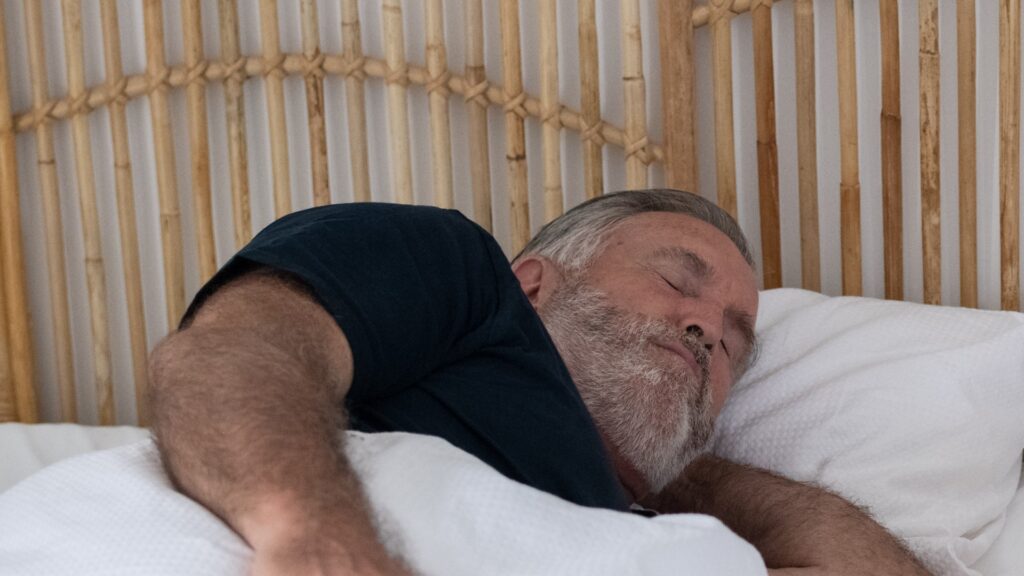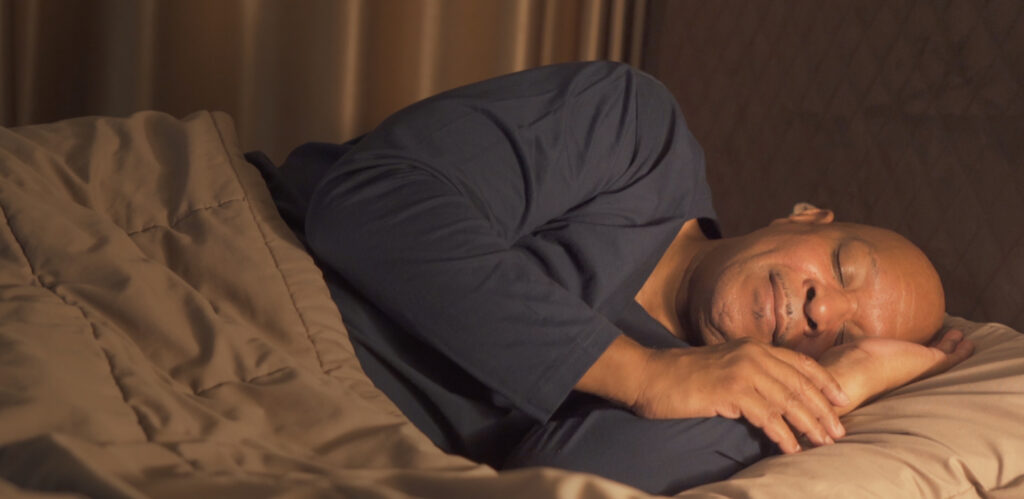In recent years, there has been a growing interest in home sleep tests in Australia. These tests offer the convenience of being able to assess your sleep health from the comfort of your own home, while still providing accurate results. Understanding the science behind home sleep tests and the types available can help you make an informed decision about whether they are right for you.
Understanding Home Sleep Tests
Home sleep tests, also known as portable sleep monitors, are devices that allow you to monitor various aspects of your sleep, such as breathing patterns, oxygen levels, and heart rate, without the need to spend a night in a sleep lab. These tests have gained popularity due to their convenience and ability to provide valuable information about your sleep quality. When considering a home sleep test Australia, there are several factors to take into account to ensure you choose the right option for your needs.
The Science Behind Home Sleep Tests
Home sleep tests use advanced technology to measure different sleep parameters. One common type of home sleep test involves wearing a small device on your wrist that tracks your movement throughout the night. This device, known as an actigraph, uses accelerometers to detect even the slightest movement, providing detailed information about your sleep patterns.
In addition to actigraphs, another type of home sleep test uses a sensor that is attached to your finger to measure your oxygen levels and heart rate. This sensor, called a pulse oximeter, emits light that passes through your finger and detects the amount of oxygen in your blood. By analyzing the changes in light absorption, the pulse oximeter can determine your oxygen saturation levels and heart rate during sleep.
These devices collect data while you sleep, and the information is then analyzed by sleep experts to provide insights into your sleep patterns. By monitoring your breathing, oxygen levels, and heart rate, home sleep tests can help identify potential sleep disorders, such as sleep apnea, and provide valuable information to healthcare professionals.

Types of Home Sleep Tests Available
There are several types of home sleep tests available in Australia, each with its own advantages and limitations. One common type is the level 3 home sleep test, which measures basic sleep parameters such as breathing patterns and oxygen levels. Level 3 tests are non-invasive and easy to use, making them a popular choice for many individuals.
Another type of home sleep test is the level 4 test, which provides more detailed information about your sleep, including brain wave activity. Level 4 tests often involve wearing sensors on your body and may require assistance from a healthcare professional to properly interpret the results. These sensors, known as polysomnography devices, record brain wave activity, eye movements, muscle tone, and other physiological variables to provide a comprehensive analysis of your sleep.
Click here to learn more about sleep tests.
Additionally, some home sleep tests offer the option of video recording your sleep. This can be particularly useful in cases where abnormal movements or behaviors during sleep need to be observed and analyzed. The combination of video recording and sleep data collected from sensors can provide a more complete picture of your sleep quality and help healthcare professionals make accurate diagnoses.
The Convenience of Home Sleep Tests
One of the key benefits of home sleep tests is the convenience they offer. Unlike traditional sleep lab studies, which require spending a night away from home, home sleep tests allow you to monitor your sleep health without disrupting your normal routine. This convenience can be particularly appealing for individuals with busy schedules or those who live in remote areas with limited access to sleep clinics. Find more about convenience on https://www.educause.edu/research-and-publications/books/educating-net-generation/convenience-communications-and-control-how-students-use-technology
Benefits of Conducting Sleep Tests at Home
Conducting sleep tests at home provides several benefits. Firstly, home sleep tests are often more affordable than traditional sleep lab studies. This cost-effectiveness makes them accessible to a wider range of individuals, who may have previously been unable to undergo comprehensive sleep assessments.
Additionally, home sleep tests offer a more natural sleep environment. Many people find it difficult to sleep comfortably in unfamiliar surroundings, which can lead to inaccurate results in a sleep lab setting. By conducting the test at home, individuals are more likely to have a typical night’s sleep, allowing for more reliable data to be collected.
Moreover, home sleep tests provide a sense of privacy and comfort. Being able to sleep in the familiar surroundings of your own bed can alleviate any anxiety or discomfort that may arise from sleeping in a clinical setting. This relaxed environment can contribute to a more accurate representation of your sleep patterns and help healthcare professionals make informed decisions about your treatment.
How to Use Home Sleep Test Kits
Using a home sleep test kit is relatively simple. The specific instructions may vary depending on the type of test you choose, but generally, you will be provided with a device and a set of instructions. These instructions will guide you through the process of attaching the sensors and starting the test.
It’s important to ensure that you follow the instructions carefully to obtain accurate results. This may involve wearing the device on your wrist or attaching sensors to specific parts of your body. Once the test is complete, you will typically be instructed to return the device to the provider, who will then analyze the data and provide you with the results.
Furthermore, home sleep test kits often come with user-friendly interfaces and intuitive controls, making the process even more straightforward. Some kits even provide video tutorials or 24/7 customer support to assist you in case you encounter any difficulties during the testing process. This additional support ensures that you can confidently navigate the test and obtain accurate results without any unnecessary stress or confusion.
The Accuracy of Home Sleep Tests
While convenience is a major advantage of home sleep tests, accuracy is equally important. Being able to trust the results of your sleep assessment is crucial for making informed decisions about your health. So how do home sleep tests compare to traditional sleep lab studies in terms of accuracy? To read more about accuracy click here.
Comparing Home Sleep Tests and Lab Sleep Studies
Home sleep tests have been found to be comparable to traditional lab sleep studies in terms of detecting certain sleep disorders, such as sleep apnea. Studies have shown that home sleep tests can provide accurate and reliable results when it comes to assessing breathing patterns and oxygen levels during sleep.
However, it’s important to note that while home sleep tests are highly accurate for certain conditions, they may not be suitable for everyone. In some cases, individuals with complex sleep disorders or other underlying health conditions may still require a more comprehensive assessment in a sleep lab setting.
Factors Affecting the Accuracy of Home Sleep Tests
There are several factors that can affect the accuracy of home sleep tests. Proper usage of the device, including correctly positioning the sensors, is crucial for obtaining reliable results. Additionally, factors such as excessive movement during sleep or the presence of certain medical conditions can impact the accuracy of the test.
Moreover, the quality of the equipment used in home sleep tests can also play a significant role in the accuracy of the results. High-quality devices that are properly calibrated and regularly maintained are more likely to provide accurate readings compared to lower-quality or outdated equipment.
Furthermore, the expertise and experience of the healthcare professional interpreting the results can greatly influence the accuracy of the home sleep test. A skilled professional who is knowledgeable in sleep medicine can accurately analyze the data and provide an accurate diagnosis.
It’s important to consult with a healthcare professional to determine whether a home sleep test is appropriate for you and to ensure that the test is conducted correctly. By addressing any potential limitations or factors that may affect accuracy, you can have confidence in the results and make informed decisions about your sleep health.

Choosing the Right Home Sleep Test in Australia
Considerations When Selecting a Home Sleep Test
Firstly, consider the specific sleep parameters you are interested in monitoring. Are you primarily concerned about breathing patterns and oxygen levels, or are you looking for a more comprehensive assessment that includes brain wave activity?
Additionally, consider the ease of use and comfort of the device. Will you be able to wear the sensors comfortably throughout the night? Is the device user-friendly and easy to understand?
Finally, look for a reputable provider of home sleep tests in Australia. Research their credentials and ensure they offer reliable and accurate tests. Reading reviews and seeking recommendations from healthcare professionals can also help guide your decision.
Trusted Providers of Home Sleep Tests in Australia
In Australia, there are several trusted providers of home sleep tests. These companies offer a range of options to suit individual needs and provide reliable and accurate results. Some reputable providers include SleepTest, Home Sleep, and SleepWell.
The Future of Home Sleep Tests
As technology continues to advance, so too does the field of home sleep testing. Innovations in wearable devices and monitoring technology have the potential to revolutionize sleep assessments and further improve convenience and accuracy.
Technological Advancements in Home Sleep Tests
One exciting development in home sleep tests is the integration of wearable devices, such as smartwatches and fitness trackers, with sleep monitoring capabilities. These devices offer the convenience of monitoring your sleep health without the need for additional sensors or equipment.
Furthermore, advancements in data analysis and artificial intelligence are improving the accuracy and interpretation of home sleep test results. By utilizing sophisticated algorithms, these technologies can provide more detailed insights into sleep patterns and help healthcare professionals diagnose sleep disorders more effectively.
The Role of Home Sleep Tests in Sleep Disorder Treatment
Home sleep tests play a vital role in the early detection and management of sleep disorders. By identifying potential sleep problems, individuals can seek timely treatment and improve their overall sleep health.
In addition, home sleep tests can be used to monitor the effectiveness of sleep disorder treatments and track progress over time. Regular monitoring can help individuals and healthcare professionals identify any changes or adjustments that may be necessary to optimize treatment outcomes.
Conclusion
Home sleep tests provide the convenience of monitoring your sleep health from the comfort of your own home while still providing accurate and reliable results. By understanding the science behind these tests, considering the convenience they offer, and recognizing their accuracy, you can make an informed decision about whether a home sleep test is right for you.
With technological advancements, home sleep tests are becoming increasingly accessible and sophisticated. By choosing a trusted provider and considering the specific sleep parameters you wish to monitor, you can select the right test for your individual needs. As the future of home sleep tests continues to evolve, these tests are likely to play an even more significant role in sleep disorder diagnosis and treatment.

